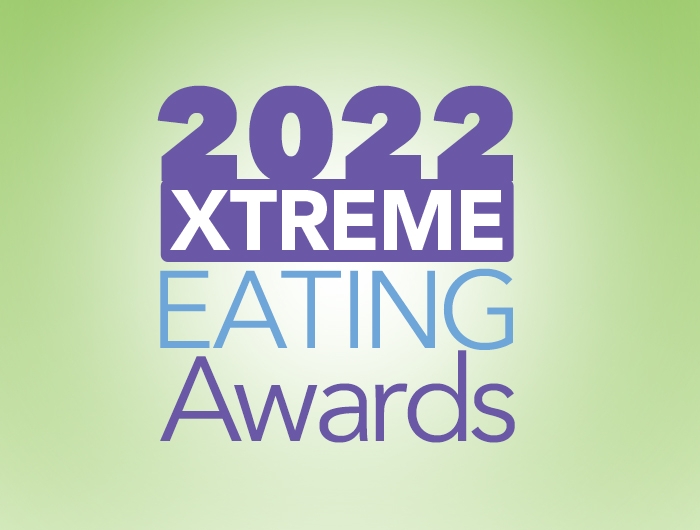Applebee’s, Bob Evans, and yes, The Cheesecake Factory, among the ‘winners’ of the 2022 Xtreme Eating Awards

The awards return after a two-year hiatus
Very few of us would put away 13 Taco Bell Beef Soft Tacos in one sitting. Yet that’s roughly equivalent to what On The Border serves up in its Smokehouse Fajitas. The chain calls them “Texas-size,” but CSPI says “Slaughterhouse Fajitas” might be a better moniker for this platter of ribs, sausage, pork carnitas, and beef brisket, plus six flour tortillas, refried beans, rice, cheese, and pico de gallo. All told, the Smokehouse Fajitas—one of eight “winners” of the 2022 Xtreme Eating Awards—hit more than a day’s worth of calories (2,530).
Besides the calories, the Fajitas pack nearly 2½ days’ worth of saturated fat (48 grams) and more than 3 days’ worth of sodium (7,390 milligrams). Is it the worst entrée in America? Probably not. As with the other “winners,” you can probably find something worse somewhere. Despite the Xtreme Eating Awards’ two-year hiatus during the COVID-19 pandemic, it’s clear that America’s chain restaurant meals are as over-the-top as ever.
The full list of winners is published in the July/August issue of the Center for Science in the Public Interest’s advertising-free flagship publication, Nutrition Action. Three more of the eight include:
Bob Evans’ The Whole Hog: The breakfast combo comes with two strips of bacon, two sausage patties, two sausage links, a slice of ham, two eggs, a hotcake, and a slice of French toast, plus hash browns, home fries, or fresh fruit. With the home fries and fried eggs, Bob’s Whole Hog hits a day’s worth of calories (2,000) plus nearly two days’ worth of saturated fat (35 grams) and sodium (4,750 milligrams). It’s like eating two Sausage McMuffins, two Egg McMuffins, and six Hotcakes in one sitting at McDonald’s.
Applebee’s Shark Bowl: One of several Applebee’s “Mucho” cocktails served in giant goblets, this one is garnished with a pair of gummy sharks. With 630 calories and an estimated two days’ worth of added sugar, this cocktail is like drinking a liter of Sprite plus two ounces of rum.
The Cheesecake Factory’s Classic Italian Trio: As if Fettuccini Alfredo weren’t heavy enough on its own, here it’s served with Chicken Parmesan and Baked Rigatoni, for a grand total of nearly a day and a half’s worth of calories and almost a work-week’s worth of artery-clogging saturated fat. CSPI says it's like eating three Pizza Hut Supreme Personal Pan Pizzas plus one stick of butter. (The Cheesecake Factory has never gone home from the Xtreme Eating Awards empty-handed.)
“Restaurant chains may have learned how to keep their customers and employees safe during the COVID-19 pandemic,” said CSPI senior nutritionist Lindsay Moyer. “But nutritionally, the chains are carrying on as if nothing has happened, despite the fact that typical American diets boost the risk of type 2 diabetes, heart disease, stroke, and obesity, all of which are linked to worse outcomes for COVID.”
CSPI began conferring the Xtreme Eating Awards in 2007 in part to help make the case for one of the group’s signature policy goals: getting calorie counts on chain restaurant menus and menu boards. That mission was mostly accomplished in 2010, with the passage of the Affordable Care Act, and with the Food and Drug Administration’s multi-year effort to implement regulations.
By now, nearly all the major chains comply in their brick-and-mortar operations and on their own websites. But calories can be absent when ordering on third-party platforms such as DoorDash or Uber Eats, where menus comply with the law inconsistently.
“Consumers who use third-party apps to order restaurant meals deserve the same access to nutrition facts as consumers who use restaurant websites or dine in person,” said Moyer. “The FDA should make clear that chain restaurant menus posted on third-party apps like DoorDash and Uber Eats need to label calories.”
What’s more, in January, CSPI and others petitioned the FDA to require chain restaurants to disclose added sugars upon request, just as they do for saturated fat, sodium, and more. (Only the calorie disclosure is mandatory on the menu.) CSPI is working alongside communities in several states and localities to require warning icons on menus when items contain excessive amounts of added sugar, sodium, or other unhealthy nutrients. (New York City and Philadelphia already require sodium warnings for menu items that contain a full day’s worth of sodium. Most recently, New York City became the first U.S. jurisdiction to pass legislation requiring added sugar warnings on chain restaurant menus when packaged foods contain a full day’s worth of added sugar.)
Besides pointing out some of the worst contenders at America’s chain restaurants, CSPI’s Moyer has tips for finding the best these chains have to offer. Chili’s, for instance, has a “Guiltless Grill” menu with items limited to 650 calories or less. At Olive Garden, the Herb-Grilled Salmon entrée fills half the plate not with pasta…but broccoli. And at On The Border, the Fajita Salad replaces flour tortillas with greens and vegetables to serve as a base for grilled chicken. And even The Cheesecake Factory has a lighter menu with entrées like the SkinnyLicious Chicken Pasta with tomato, marinara sauce, and basil.
Tags
Topics
Contact Info: Richard Adcock

